Venerupis philippinarum (A. Adams & Reeve, 1850)Common name(s): Manila clam, Japanese littleneck clam |
|
| Synonyms: Tapes japonica, Tapes philippinarum, Tapes semidecussata, Protothaca semidecussata, Ruditapes philippinarum, Paphia sp.. | 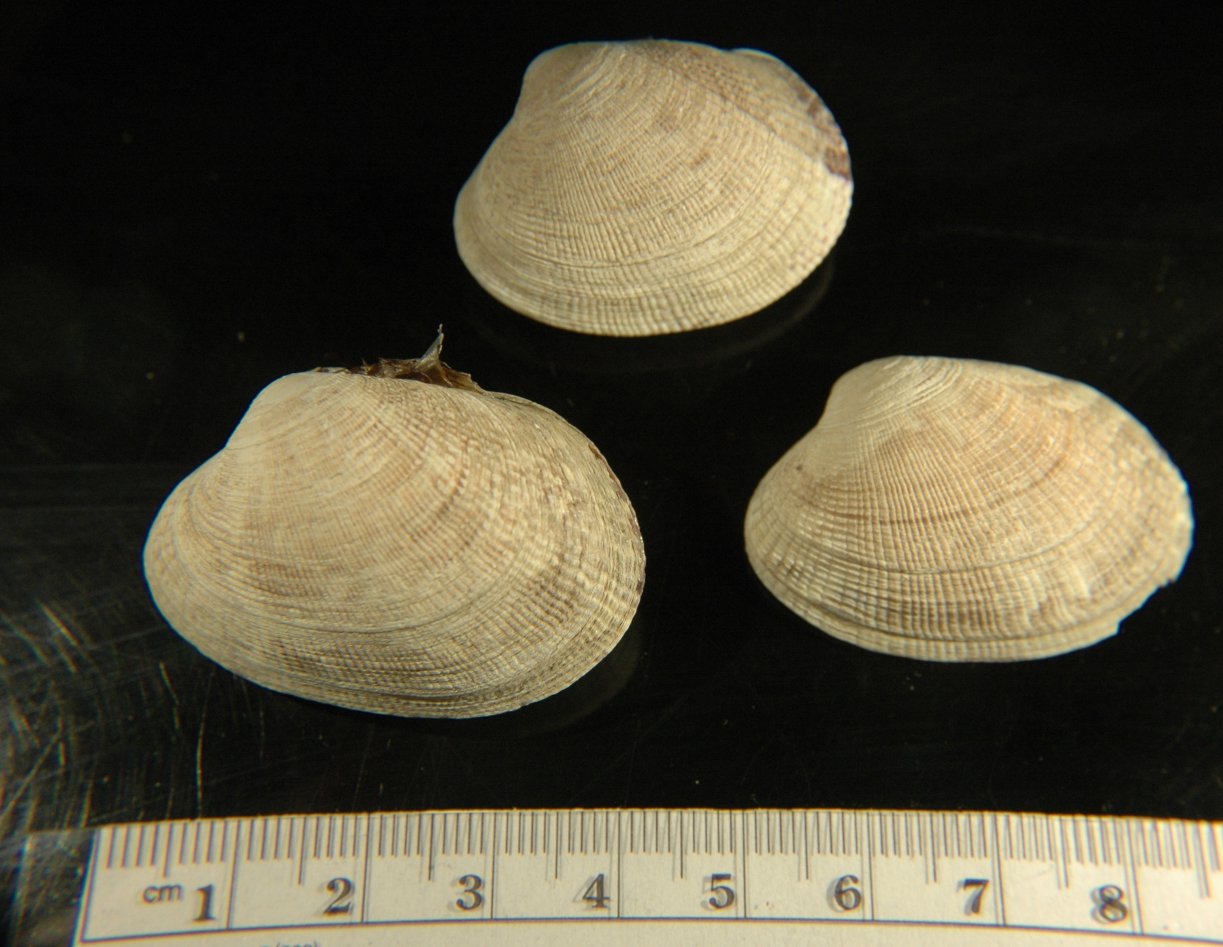 |
| Phylum Mollusca
Class Bivalvia Order Veneroida Family Veneridae |
|
| Venerupis philippinarum from a local grocery store | |
| (Photo by: Dave Cowles, Jan 2007) | |
How to Distinguish from Similar Species: Butter clams Saxidomus gigantea have only concentric sculpture. Native littleneck clams Leukoma staminea are found in similar habitat and look similar but are as high as they are long, their ridges are less prominent, their siphons are fused all the way to the tips, and the inner ventral margin of the shell is finely serrated. These other species do not have purple markings inside the shell. Another introduced species, Nuttallia obscurata, has purple markings inside the shell but the light brown periostracum is smooth and shiny.
Geographical Range: Asia, Central BC to southern CA.
Depth Range: High intertidal
Habitat: Sand, mud, or gravel in the high intertidal zone. May occasionally be attached to a stone by a byssus.
Biology/Natural History: The siphon of this clam is not long (even though it has a well-developed pallial notch) and the clam buries only to 10 cm depth. This clam is introduced from Asia. It was first accidentally introduced into British Columbia in 1936 along with Pacific Oyster spat. It has now become well established and is one of the main species of clam harvested along the coast of Washington and British Columbia. Moon snails Polinices lewisii don't often attack this species because the species lives so high in the intertidal. Breeds in the summer. May contain pea crab symbionts Pinnixia faba or P. littoralis. Tolarates salinity as low as 1/3 seawater. May live 14 years. May contain red tide toxins.
Dudas
et al. (2005) found that the common local cancer crabs Metacarcinus
magister (Dungeness crab) and Cancer
productus (red rock crab) preferred the
thin-shelled introduced
varnish clam Nuttallia
obscurata to the thicker-shelled clams Leukoma
staminea and Venerupis philippinarum
if access to all was
equally easy. However, Nuttallia
obscurata typically lives deeper in the sediment
than do Leukoma
staminea or Venerupis philippinarum.
If they had to
dig for them, Metacarcinus
magister still ate more Nuttallia
obscurata than it did of the other clam species,
but C.
productus' preference switched to Leukoma
staminea and Venerupis philippinarum.
| Return to: | |||
| Main Page | Alphabetic Index | Systematic Index | Glossary |
References:
Dichotomous Keys:Fitch, 1953 (as Tapes demidecussata)
Kozloff 1987, 1996 [as Tapes (Ruditapes) philippinarum]
General References:
Harbo,
1997
Harbo,
1999
Kozloff,
1993 (as Tapes japonica)
McConnaughey
and McConnaughey, 1985 (as Tapes japonica)
Morris,
1966 (as Tapes japonica)
Morris
et al., 1980
Niesen,
1997 (as Tapes japonica)
Ricketts
et al., 1985 (as Tapes japonica)
Scientific Articles:
Dudas,
Sarah E., Iain J. McGaw, and John F. Dower, 2005.
Selective crab
predation on native and introduced bivalves in British
Columbia.
Journal of Experimental Marine Biology and Ecology 325:1 pp 8-17
Ruesink, Jennifer L., B.E. Feist, C.J. Harvey, J.S. Hong, A.C. Trimble, and L.M. Wisehart, 2006. Changes in productivity associated with four introduced species: ecosystem transformation of a 'pristine' estuary. Marine Ecology Progress Series 311: pp 203-215. doi 10.3354/meps311203
Web sites:
Washington
Dept of Fish and Wildlife clam page
General Notes and Observations: Locations, abundances, unusual behaviors:
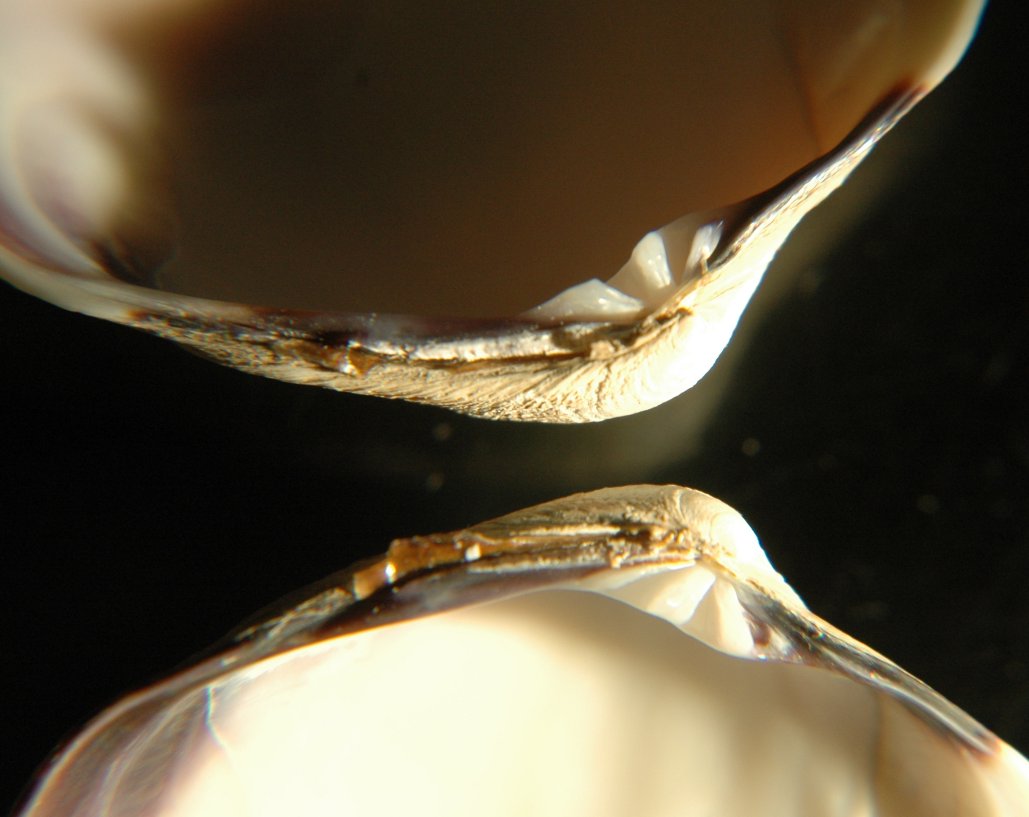
As is characteristic of members of Family Veneridae, this species has
three well-developed hinge teeth in each valve.
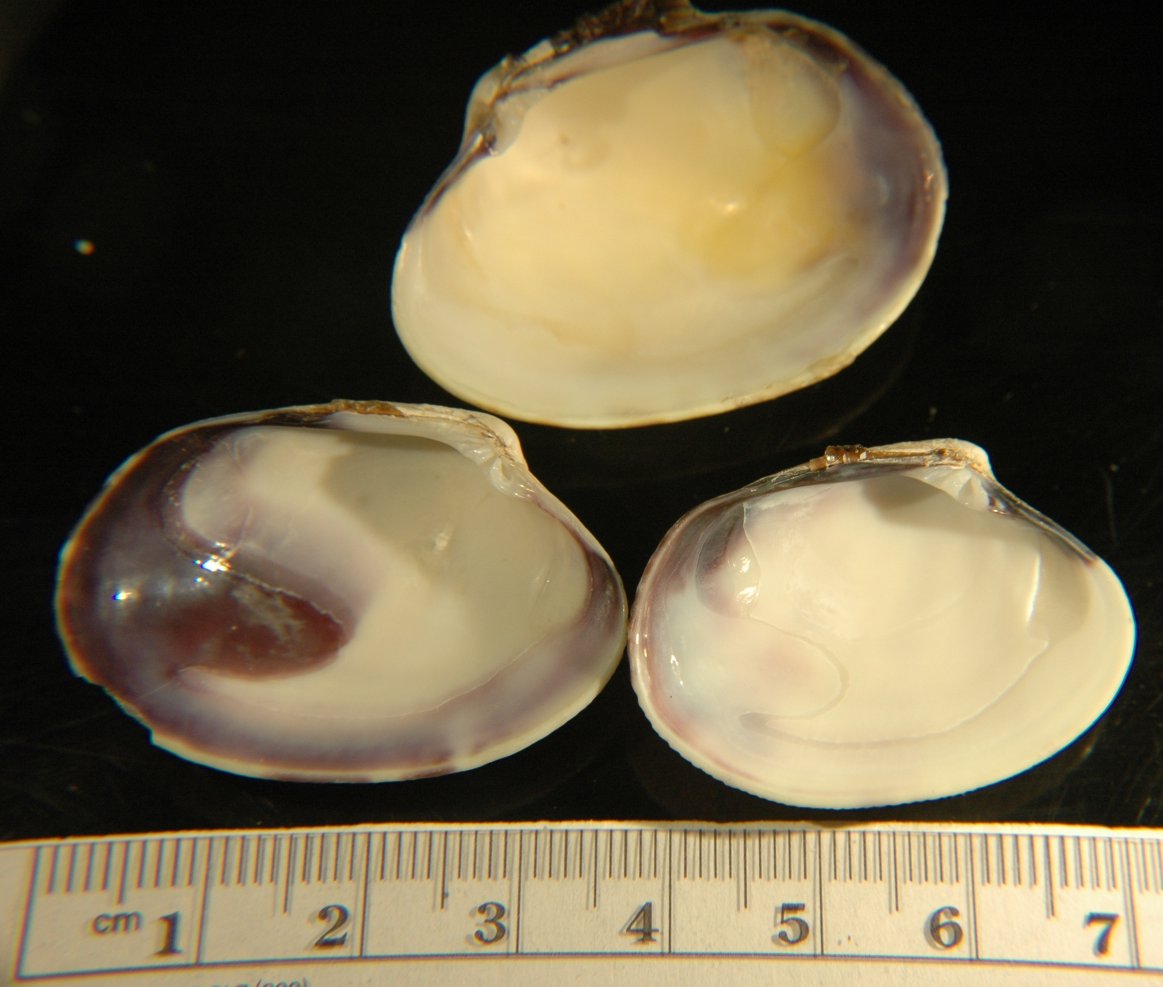
The inside of the shell often has a purplish and/or a yellow
coloration.
Note the distinct pallial
line and pallial
sinus.
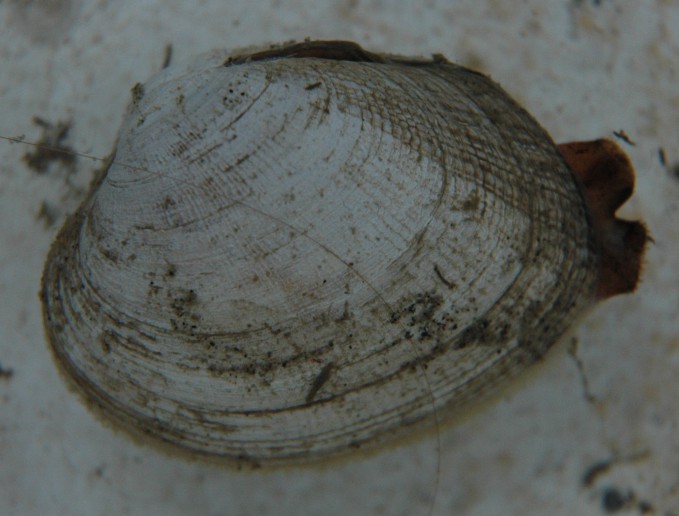
Venerupis philippinarum has siphons
which are dark but split into two distinct tubes at the end.
This
can help distinguish living individuals from the littleneck clam, Protothaca
staminea.
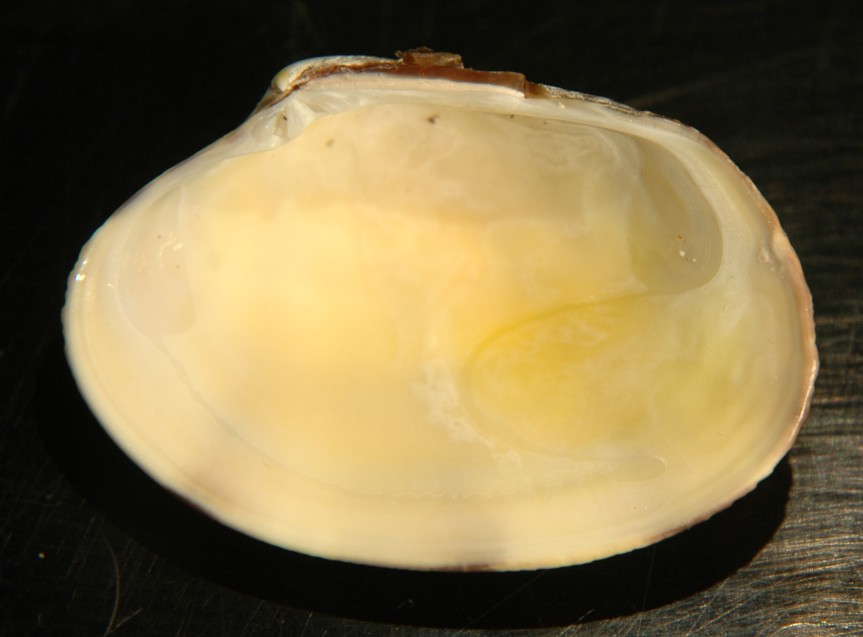 |
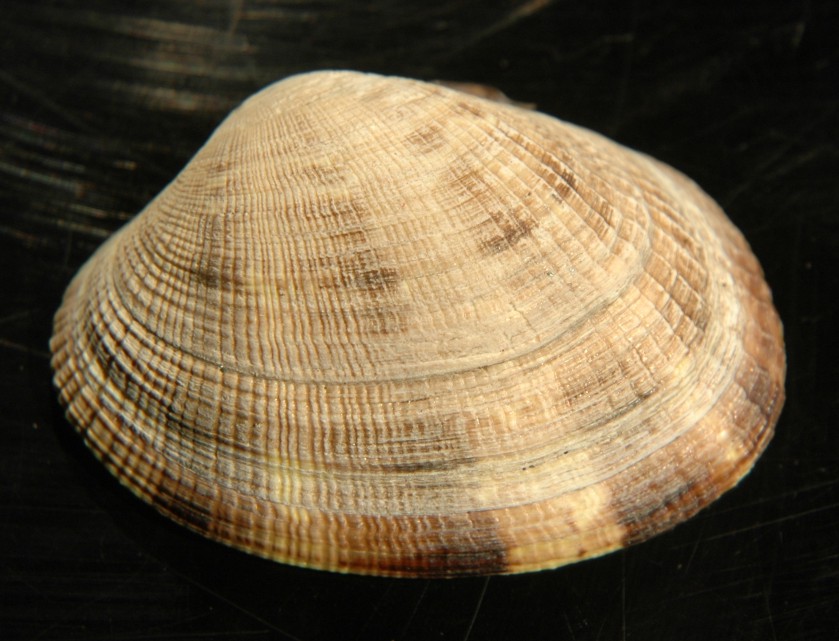 |
| Some Venerupis philippinarum have only yellow and no purple inside. This clam was from a package of live clams labeled as a product of Vietnam, and none of the clams in the package had a purple stain. Notice the brownish radial streaks on the exterior of the shell. | |
Authors and Editors of Page:
Dave Cowles (2006): Created original page